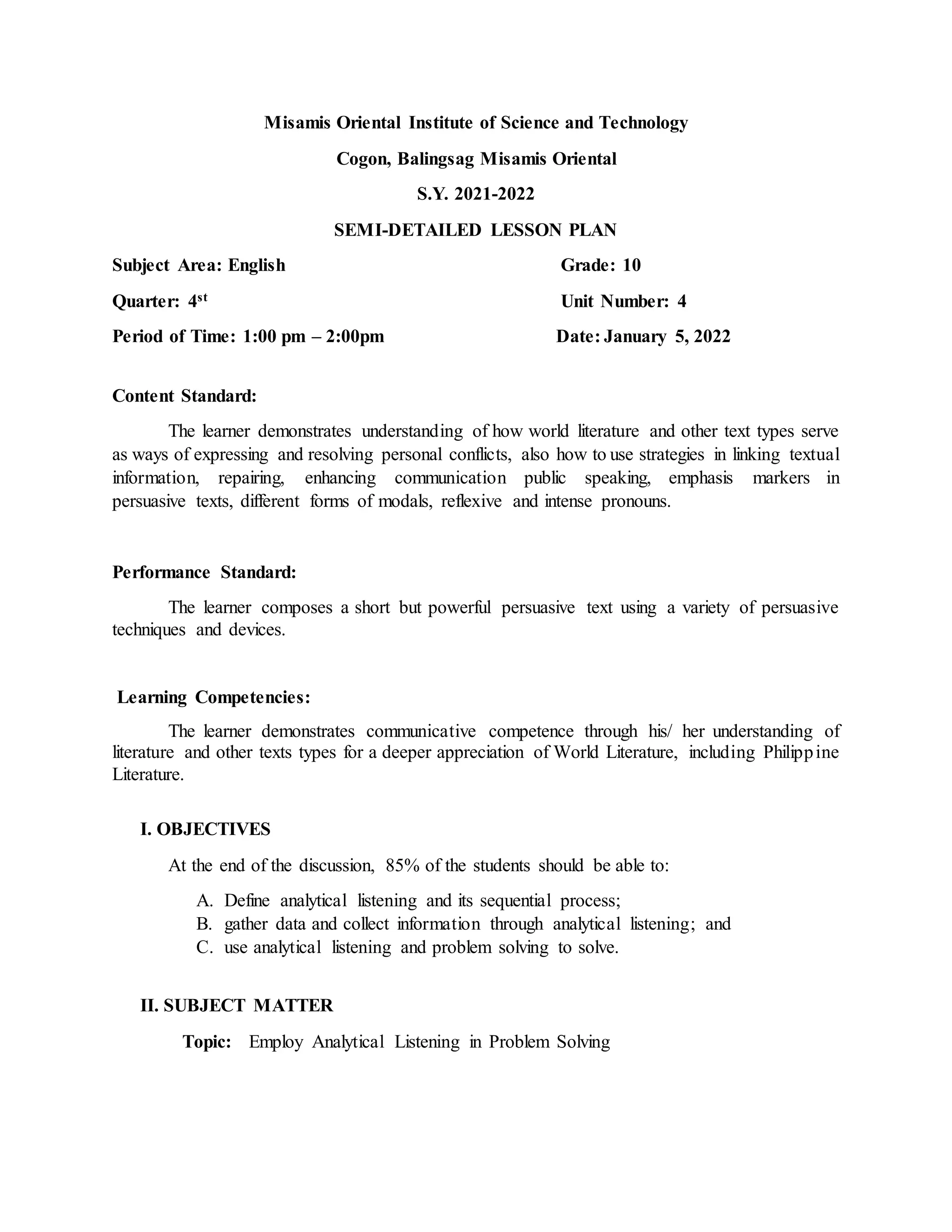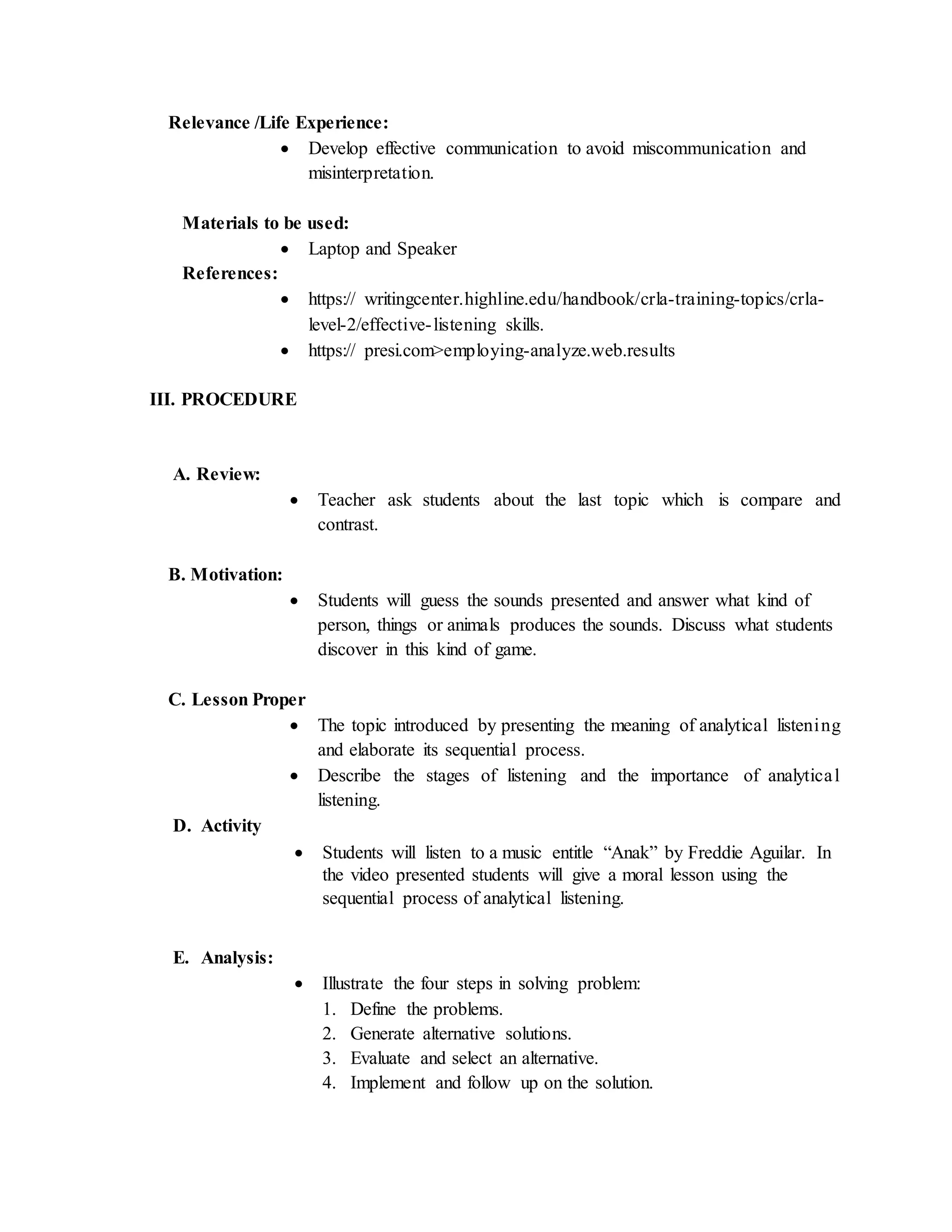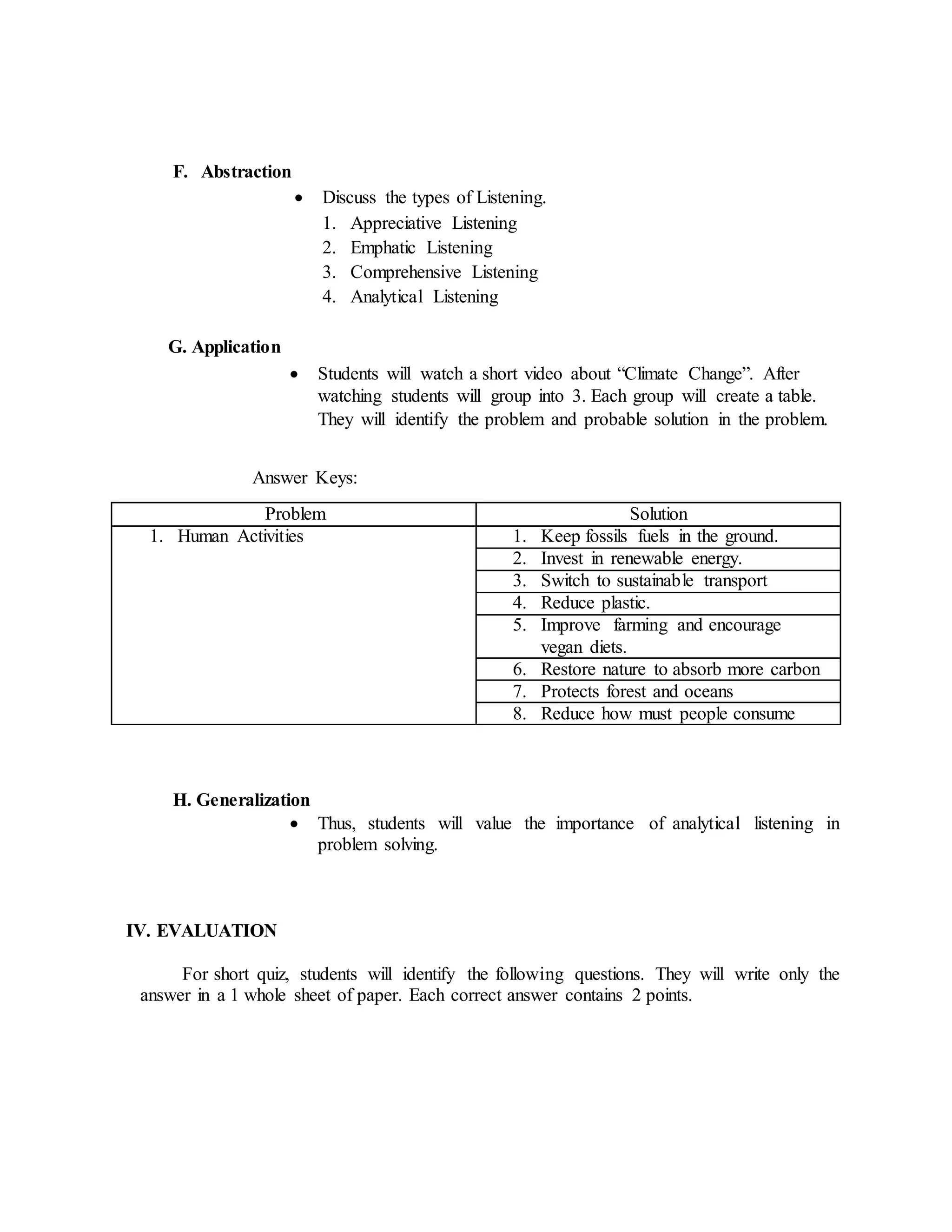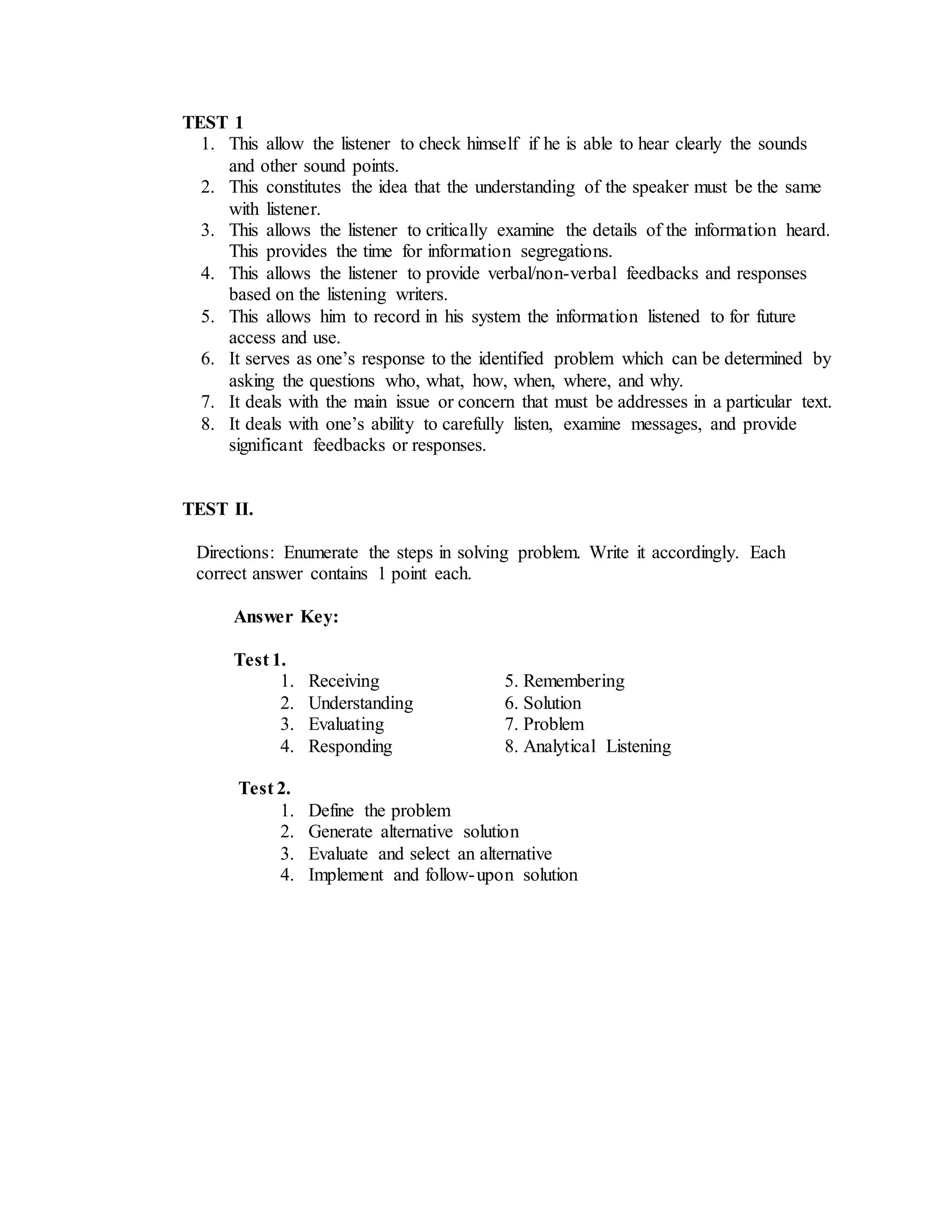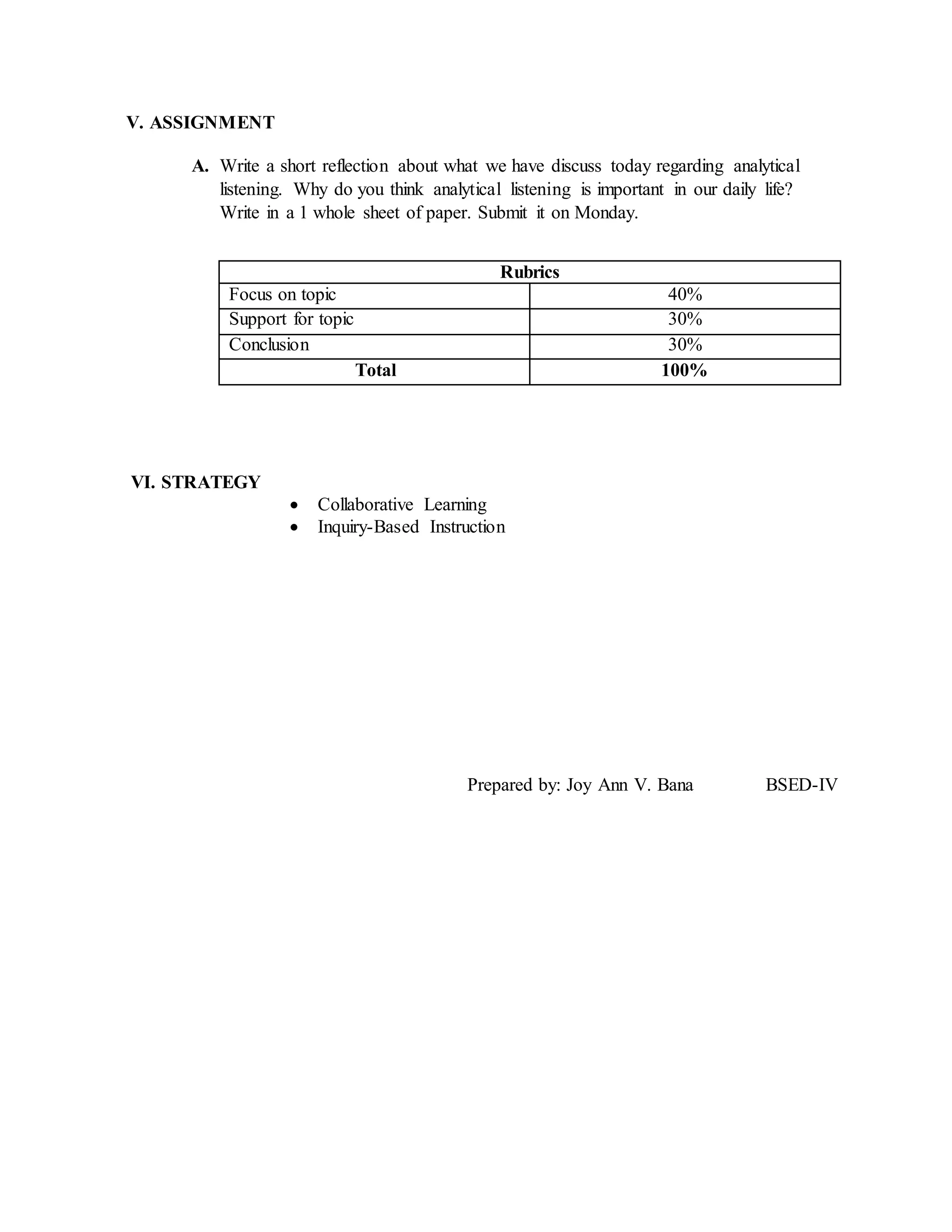The document provides a semi-detailed lesson plan for an English class. The lesson plan aims to teach students about analytical listening and how to use it in problem solving. Key points of the lesson include defining analytical listening, its sequential process, and importance. Students will listen to a song and identify a moral lesson. They will also watch a video on climate change and identify problems and solutions in a table. The lesson aims to help students value analytical listening in problem solving. An evaluation involves students answering questions to test their understanding of analytical listening concepts and steps to solving a problem.
